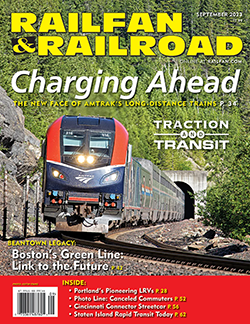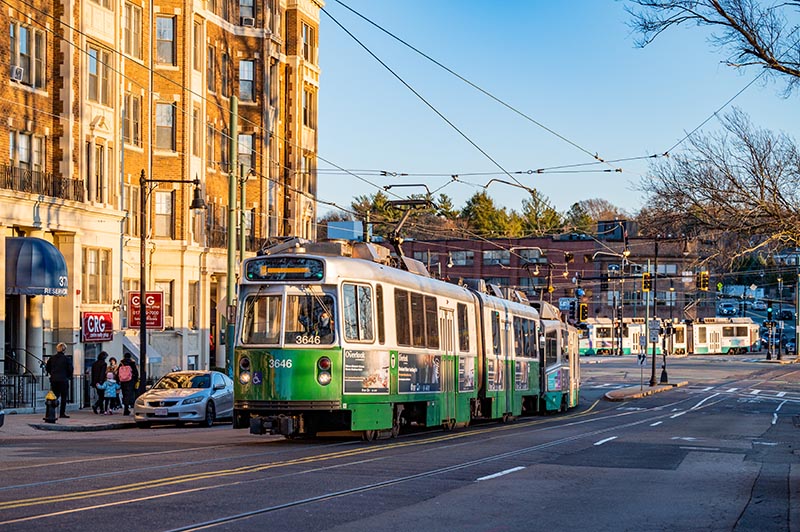 Since the earliest days of railways in North America, there has been urban rail transit. In New York, horse-drawn streetcars connected Harlem to lower Manhattan in 1832, while New Orleans’ first horse-drawn streetcar line opened in 1834. To put this into perspective, this was long before our first major railway, Baltimore & Ohio, had crossed the Alleghenies, much less reached the Ohio River. According to the Smithsonian, in less than a century, U.S. cities built more than 45,000 miles of transit tracks, a mixture of streetcars, trolleys, interurbans, elevateds, and subways — and this does not count the additional miles of commuter operations over the so-called “steam roads,” nor does it count the extensive systems built across Canada and Mexico.
Since the earliest days of railways in North America, there has been urban rail transit. In New York, horse-drawn streetcars connected Harlem to lower Manhattan in 1832, while New Orleans’ first horse-drawn streetcar line opened in 1834. To put this into perspective, this was long before our first major railway, Baltimore & Ohio, had crossed the Alleghenies, much less reached the Ohio River. According to the Smithsonian, in less than a century, U.S. cities built more than 45,000 miles of transit tracks, a mixture of streetcars, trolleys, interurbans, elevateds, and subways — and this does not count the additional miles of commuter operations over the so-called “steam roads,” nor does it count the extensive systems built across Canada and Mexico.
Transit, then, is one of the oldest forms of railroading on the continent. Today, there are more than 140,000 miles of rail transit in the U.S. alone, spread over more than 50 metropolitan regions. Yet as early as the 1920s, federal subsidies for highways, combined with the development of affordable automobiles, began to eat into transit ridership. By the early 1960s, all but a handful of rail transit lines were gone.
If they weren’t done in by the Great Depression, worn-out infrastructure hammered by wartime traffic — coupled with the promise of cheap buses and the fuel to operate them — wiped out most of the streetcar lines in America. Heavy rail rapid transit in the major cities like New York, Boston, and Chicago merely limped along under private ownership until public subsidies arrived to stabilize and eventually modernize them.
Contrasting these “legacy” systems are the “new builds.” Washington, D.C., made a bold move opening the Metro in 1976, growing into a 129-mile system connecting city and suburb. San Diego is credited with launching the light rail renaissance in the West, opening in 1981, followed by the Portland (Ore.) TriMet MAX in 1986, and Sacramento, Calif., in 1987. Built on the ashes of the extensive Pacific Electric, light rail returned to Los Angeles in 1990, and the city’s first subway line opened in 1993.
The difference between legacies and new builds is first and foremost their infrastructure. Legacies exist atop layers of past changes, and decisions made in 1890 or 1910 often restrict what is possible today. New builds, by contrast, rarely had to contend with decisions of the past, making them relatively easier to maintain, keep clean, and operate. This doesn’t automatically mean that new builds are better than the old, however. Legacies can be creaky, but they are often right in the heart of where people want to go (like Boston’s Green Line). New builds are more likely to be out by the freeway, boasting hundreds of parking spots, but missing points of interest and population centers.
There’s also an attitude difference. Legacies are rustier, grungier, more chaotic; new builds are smooth and gray and efficient. Legacy equipment, even when new, favors conventional liveries, while most new builds like supergraphics and bold colors. Then there are stations and wayfinding. New builds are eager to please, splashing about signs, benches, lights, and even public art. Legacies? Not so much. I remember a time in Chicago when I tried to find a CTA station. The lack of wayfinding was downright passive-aggressive, as if to say, “Hey, our station’s been here for generations, everybody who lives here knows where it is, what’s your problem?” Legacy and new-build systems thus have wildly different characters, and while both are part of the North American rail landscape, it’s the curmudgeonly legacy line that infuriates me the most — but also makes me smile.
—Alexander Benjamin Craghead is a transportation historian, photographer, artist, and author.



